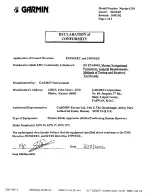
9502 User Guide
3004146-0001 Rev H
39
NAT Mode
In
NAT mode
once a PDP context is active, the UT will translate
between the local and global IP addresses. This is a basic NAT that
only performs IP address translation. It does not use port
translation.
NAPT Mode
In
NAPT mode
(5.9.4.4 and above) multiple devices connected via
a hub or switch share a single PDP context. The port translating
NAT modifies both IP addresses and port numbers so multiple
devices can share the single global IP address assigned to the PDP
context.
In NAPT mode, only a single context is supported. By default the
Always On Context is activated on the M2M page. The ACA page
is removed. A Port Forwarding page is added under Settings and
can be used to configure the DMZ and Port Forwarding.
Relay Mode
In
Relay mode
the UT will supply the global IP address to the TE
when the context is established. Relay mode is single user and only
supports a single connected TE.
In Relay mode DHCP is required to provide the global IP address
to the TE. When the context is activated, the DHCP server in the
UT will NACK the next DHCP lease renewal from the TE and
assign the global IP address assigned by the network. The local IP
connection will be torn down and reestablished as the IP address
changes. Similarly, when the context is deactivated the DHCP
server will NACK the lease renewal and then reassign the original
private IP address.
The Web UI will lose and reestablish its connection to the terminal
as the IP address is changed.
To make the IP address change happen quickly a short DHCP lease
should be used. The terminal defaults the lease time to 60 seconds
in idle and connected mode.
Relay mode only supports a
single
user TE. If you need to connect
a laptop via the USB port for configuration and monitoring
purposes, you must set the laptop up with a local static IP address
within the same subnet as the terminal e.g., 192.168.128.200. This
prevents the USB port from getting the single DHCP address when
in Relay mode once you reboot the terminal.















































